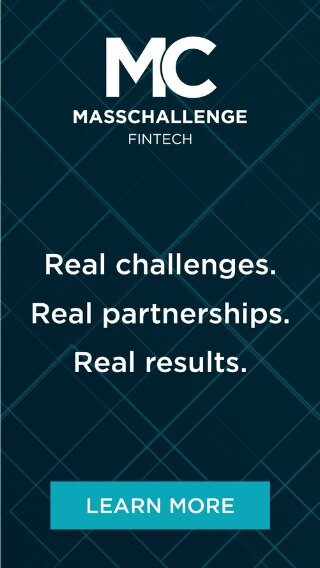Inside Stearns Bank’s community-focused strategy
/The FR recently spoke with Stearns Bank CEO Kelly Skalicky about how the bank is reaching underserved communities, including through partnerships with community development financial institutions (CDFIs). This interview has been edited for clarity.
Good to have you join our Q&A series! Can you tell us about Stearns Bank and who it serves?
Thank you — glad to be part of it! We’re headquartered in St. Cloud, Minnesota and have branches in Florida and Arizona, and a couple in Minnesota. We’re a well-capitalized, employee-owned financial services organization that operates nationwide, and today, we serve more than 35,000 business customers.
One of our primary focus areas is housing — especially affordable housing. We've been active in that space since the 1980s, working nationwide on Low-Income Housing Tax Credit and all kinds of workforce housing projects. We’re deeply embedded in communities for three to five years at a time while these projects are underway. We've been doing that kind of work for decades and are proud to work with customers across the country to get more affordable housing projects off the ground.
We also have deep experience and expertise in the equipment finance industry. Our Equipment Finance Division supports business customers — ranging from small mom-and-pop businesses to doctor offices — across every industry you can think of.
If it deals with mission-critical equipment, we’re likely financing it: doctors, restaurants, construction, and trucking and logistics.
How do you work with CDFIs, or financial institutions that offer affordable lending and financial services to underserved groups?
Although we are not a CDFI, we work with CDFIs all the time. They often have lending portfolios they've built up, and we’ll come in and provide them with more capital so they can leverage those portfolios further.
We’ve worked with CDFIs like the African Development Center (ADC) out of Minneapolis and the Initiative Foundation out of Minnesota. For example, we provided $20 million at 0% interest to the ADC, and $10 million to the Initiative Foundation so they could lend locally. These organizations already have accelerator programs and strong delivery networks in their communities. We come in across the country and help further bolster their work.
For us, it’s not necessarily about [the] direct impact [we make] ourselves. It’s about understanding how to support and show up in meaningful ways in the broader banking ecosystem. We know how the New Markets Tax Credit programs work, we understand the role of the CDFI Fund, and we’re familiar with the banks that are receiving and deploying these funds. So, we step in to help CDFIs expand their reach and deliver more community impact — strengthening the banking industry as a whole.
The CDFI Fund is a federal program that supports CDFIs in their efforts to serve marginalized and economically disadvantaged communities through grants and loans, tax credits, affordable housing funding and bond guarantees.
I understand that the March 14 executive order, “Continuing the Reduction of the Federal Bureaucracy,” calls for the elimination of the Fund’s non-statutory components “to the maximum extent consistent with applicable law.” As a partner to CDFIs and an institution focused on underserved customers, what impact do you think this executive order could have on those communities?
The ability to have such a diverse choice — and diverse delivery system — of financial products to communities is really a trademark of small business growth in this country. Many of our small businesses are either solopreneurs or they do 1099s. They have one true employee.
That kind of business growth needs to have access to a large variety of financing. And I think you’re seeing a lot of fintechs start looking at those areas — other savings tools, other tools that small businesses — which are essentially intertwined with the business owner’s own financing. The goal is to provide that financial hub and destination for the small business owner.
In my view, when you shock the system with what some might think of as a small budget cut item, an unnecessary budget item from our federal government’s perspective, there are downstream effects. People may not know how connected the total banking ecosystem really is and how the ecosystem supports rural and urban communities that are underserved by the four mega trillion-dollar banks.
What are CDFIs telling you about the possible impact of the executive order on their operations?
They were pretty panicked. If they lose that funding, it's a huge source — whether it's matching funds or leverage — that they're counting on. It’s a very interdependent system.
I probably had 10 different calls from people saying they were considering laying off staff until they could figure out whether this was going to be funded at all. There was bipartisan support that stepped in right away and said, “Wait a minute.” Groups like the Independent Community Bankers, the National Bankers Association — those associations stepped up and said, “Wait, we don’t think you realize what kind of impact this could have.”
All of them are actively looking at how to diversify their funding sources.
How can fintechs and banks support the CDFI ecosystem?
I would like to see the banking community be a lot more collaborative and much more aware of the many different communities CDFIs support and empower.
There’s a strategic place for fintechs, because many of these CDFIs, for example, rely on technical assistance from the CDFI Fund. I think the products and services of many fintechs work well in this context — you’ve got a local entity or institution that already has the customer base, is already advising small businesses, or is serving consumers. It’s an important network for fintechs to access if they offer small business or consumer services tailored tech solutions and products that can bolster growth.
Beyond your work with CDFIs, can you tell us about other initiatives aimed at underserved communities, including Stearns Salaam Banking, your Islamic banking division?
These are areas that have just kind of fallen through the cracks. There are a lot of existing community centers or hubs, and so many times, banks will build a branch on the corner and expect people to come to them. We’ve taken a different approach. We go directly into the community centers where people are already gathering and have been putting these community hubs at the center of what we do for years. It just makes it less intimidating and more accessible. We hire from the community and make sure people can ask questions and figure out what financial services they need and want.
With Stearns Salaam Banking, there’s a large, underserved population in this country that wants Sharia-compliant financing but simply don’t have access to financing or to deposit accounts where interest isn’t paid or earned. We spent about a year setting up a Sharia-compliant banking division. We have a separate Sharia Advisory Board that examines all our loan and deposit products to ensure they comply with Islamic law.
We launched the division in March of 2024, and the demand has been overwhelming. It’s an area that’s been completely ignored, underserved, and underbanked. Today, Stearns Salaam Banking is the only national, Sharia-compliant banking division offering financing and deposit services to meet the banking and economic needs of this community. .
That’s really what we aim to do — to address the many remaining gaps in access to financial services.





